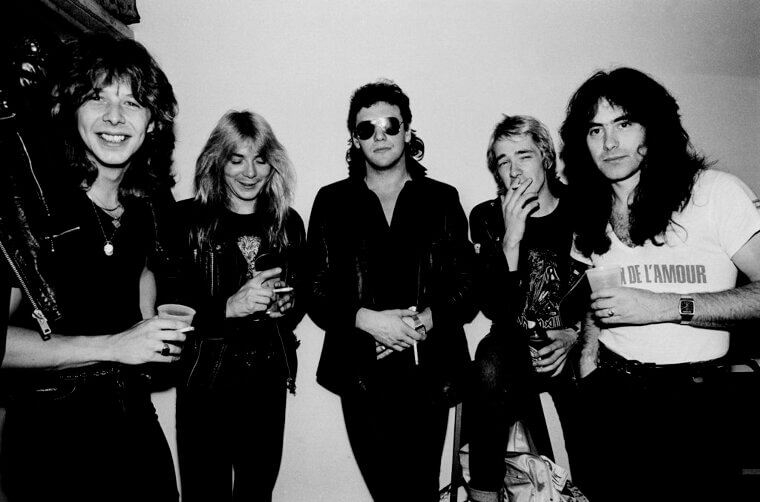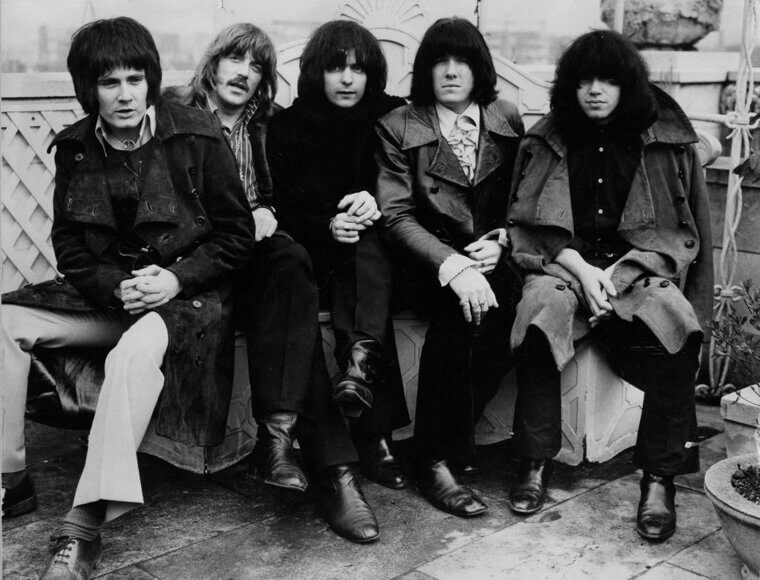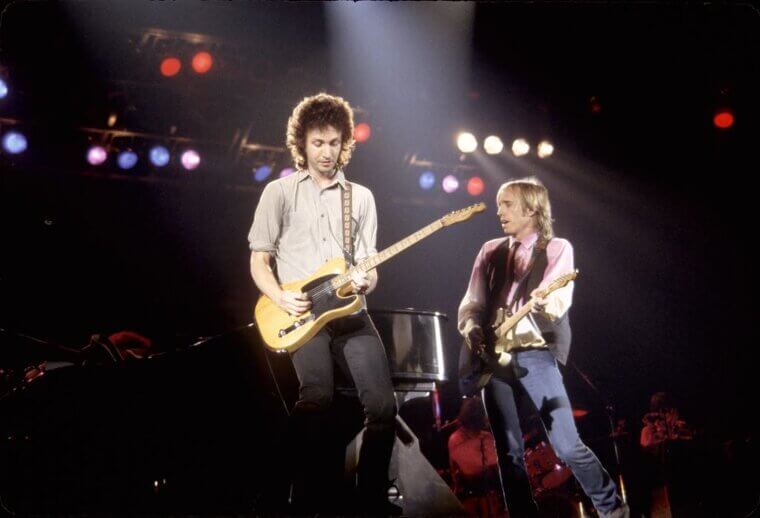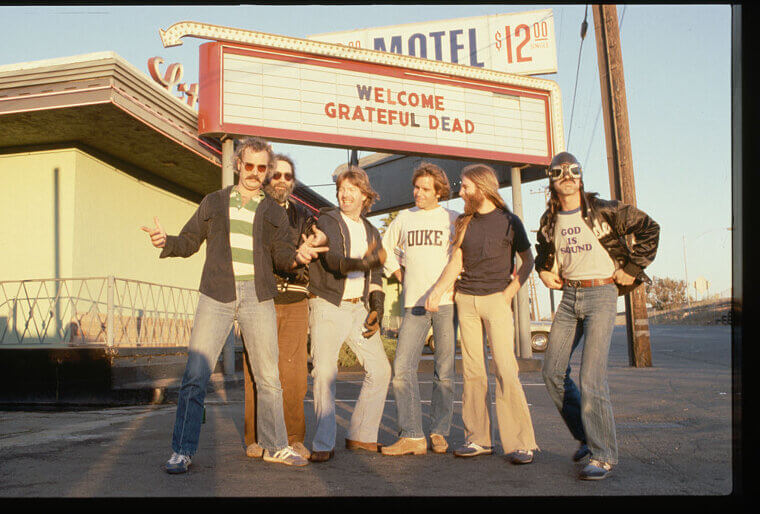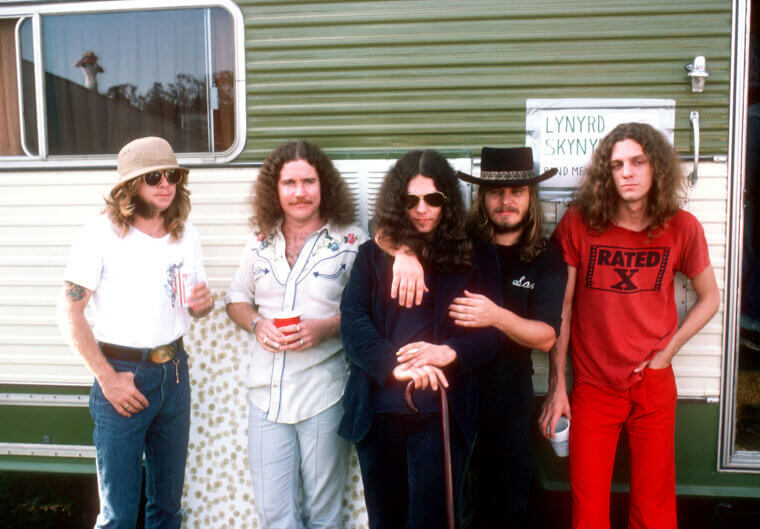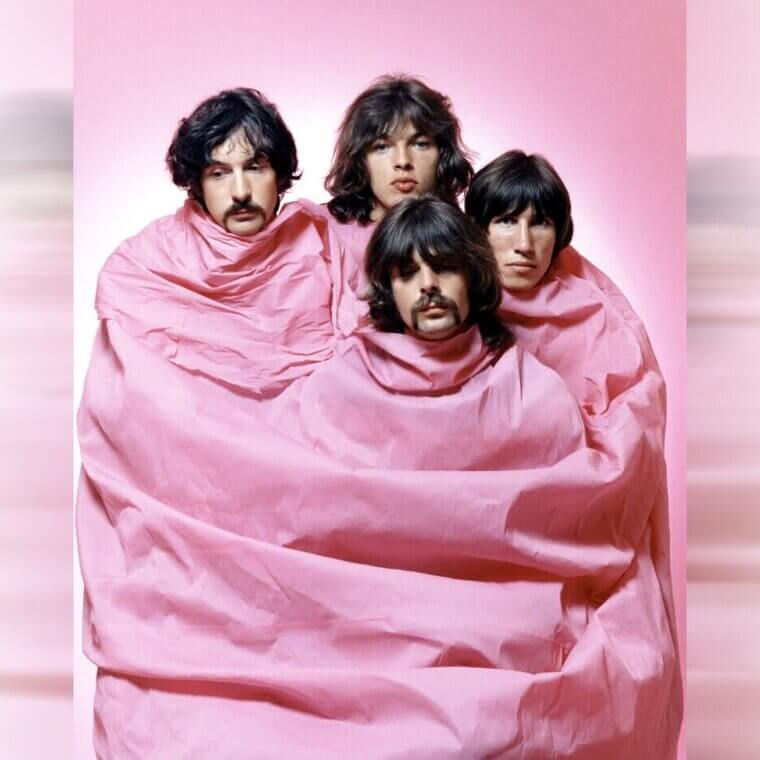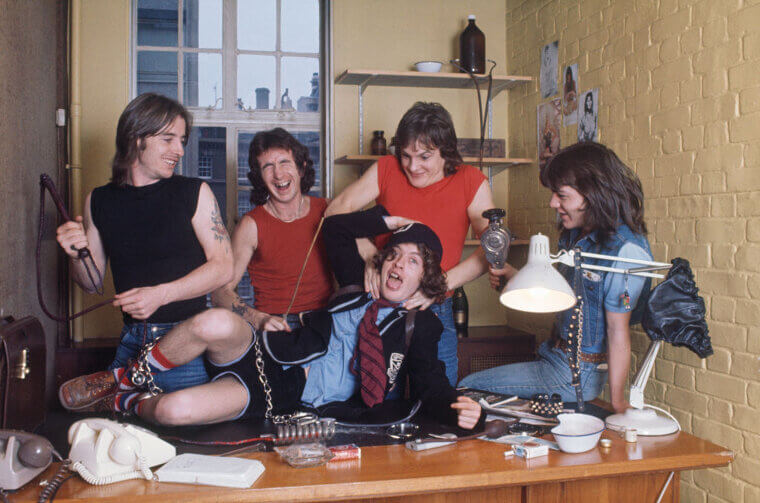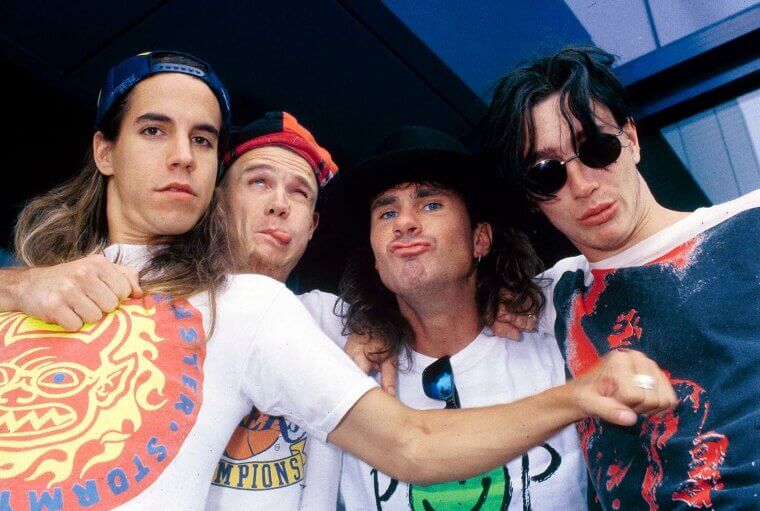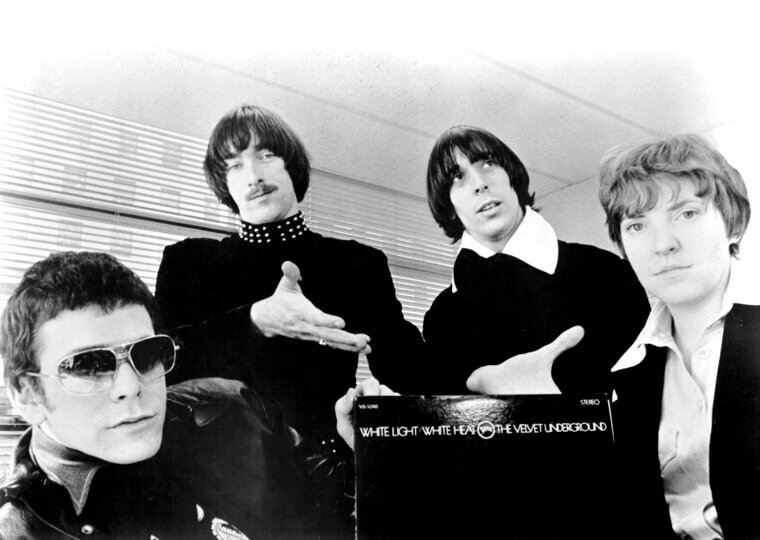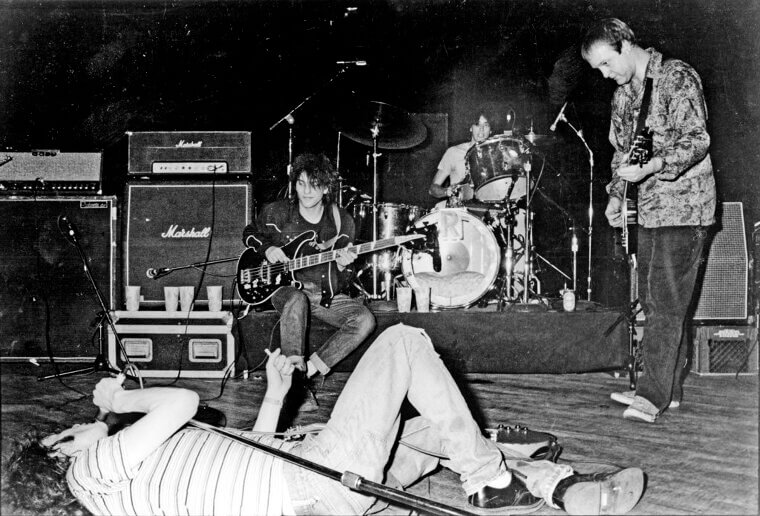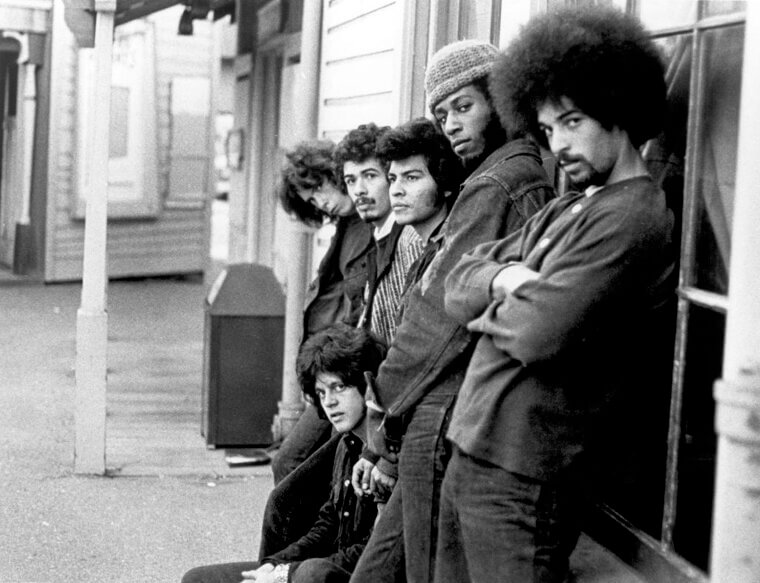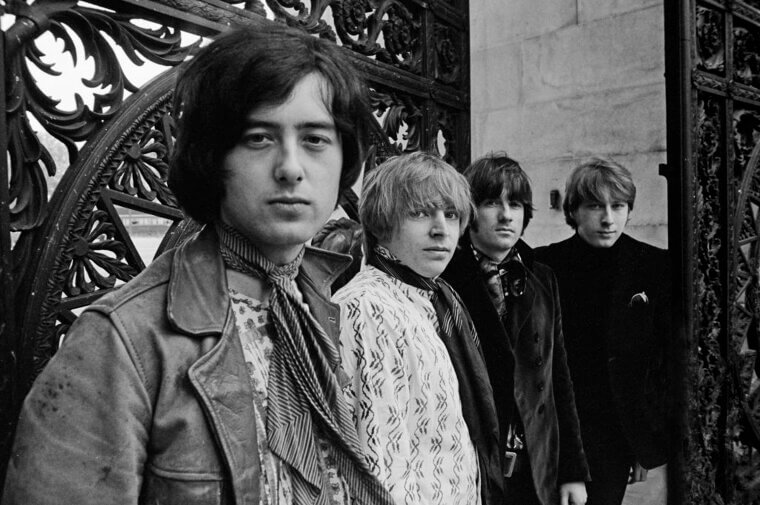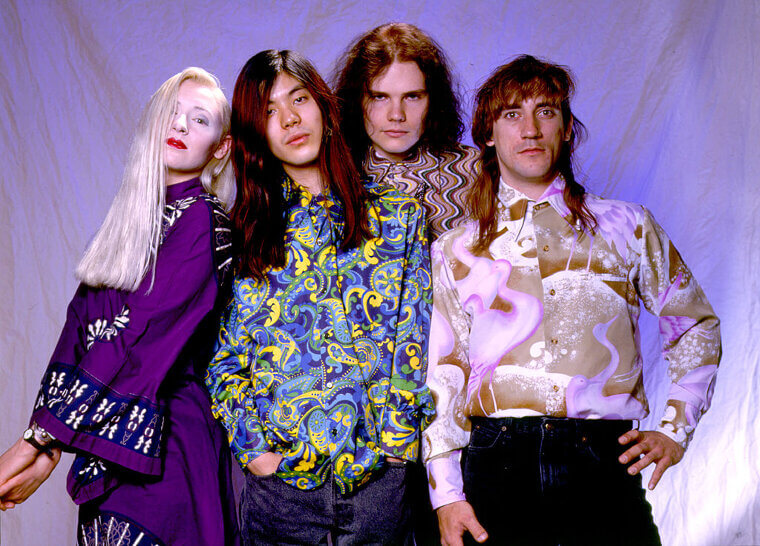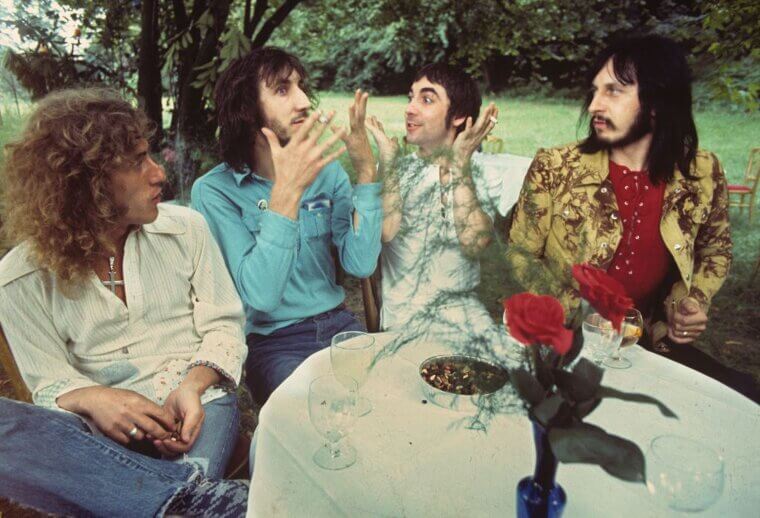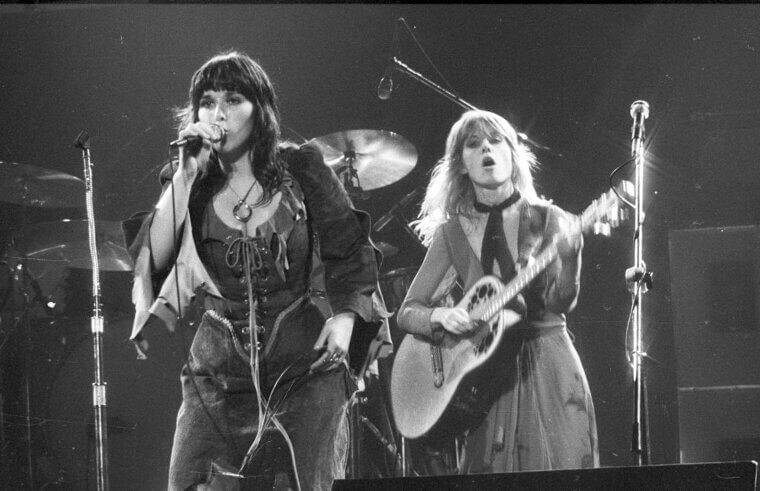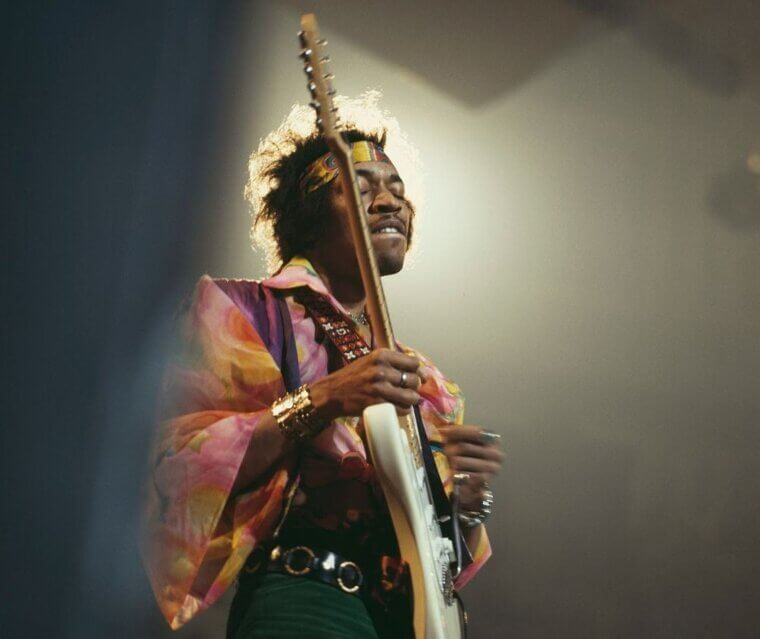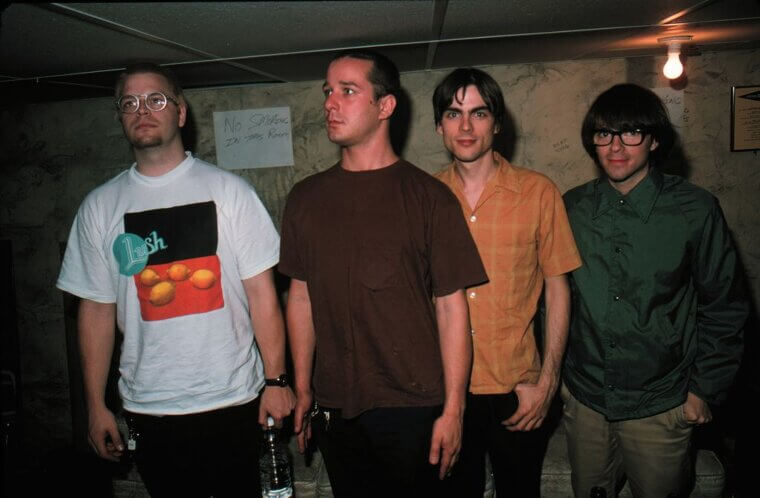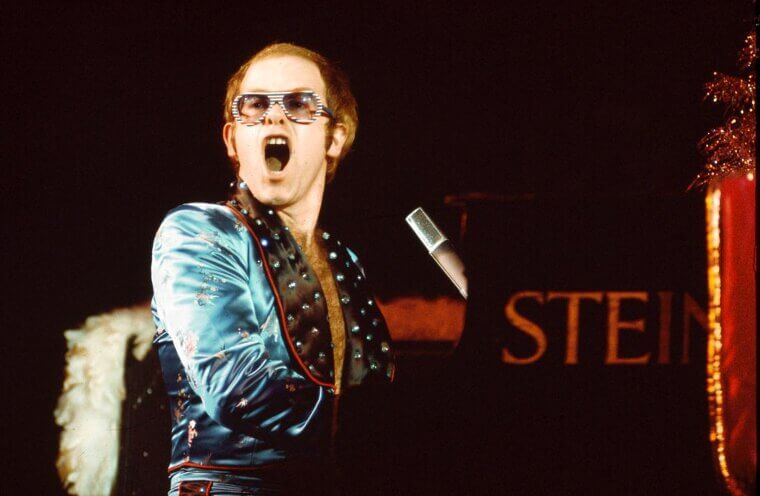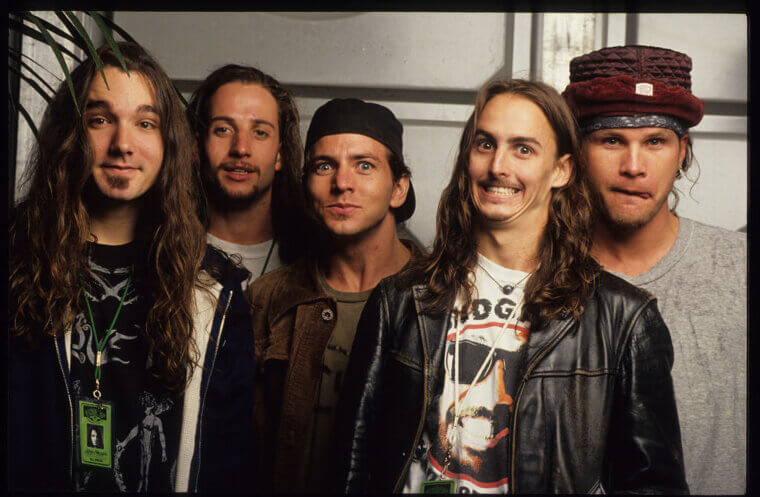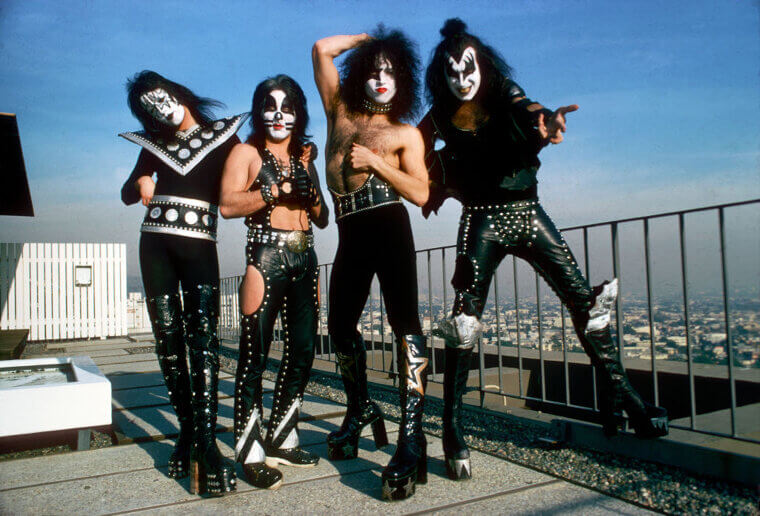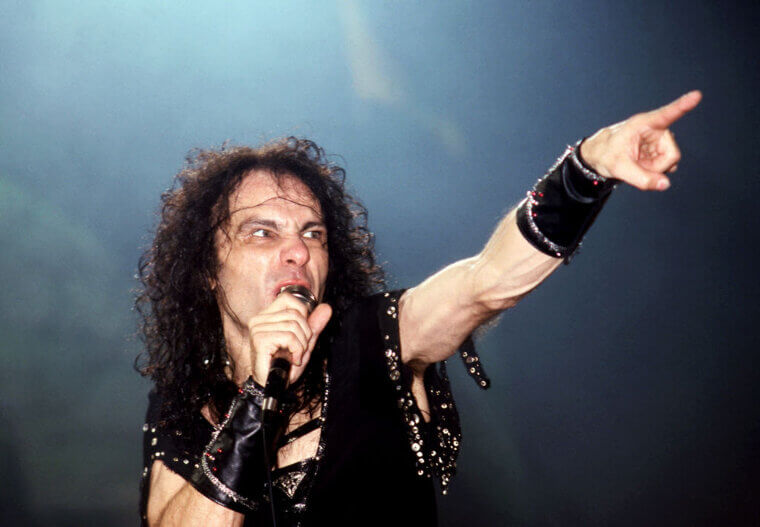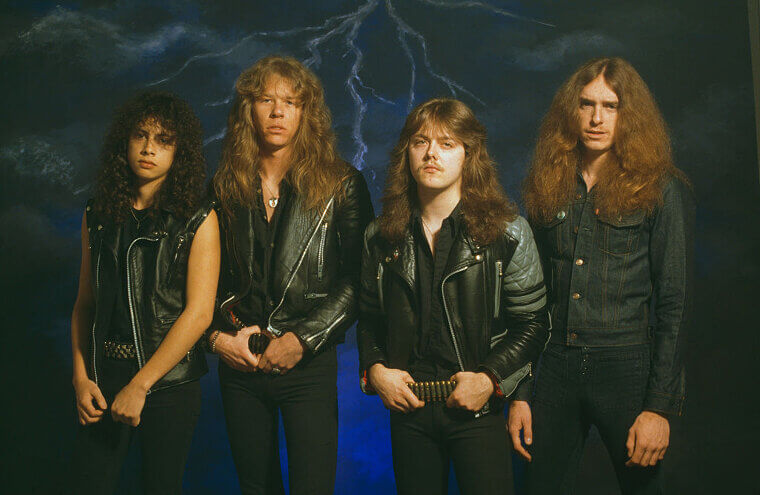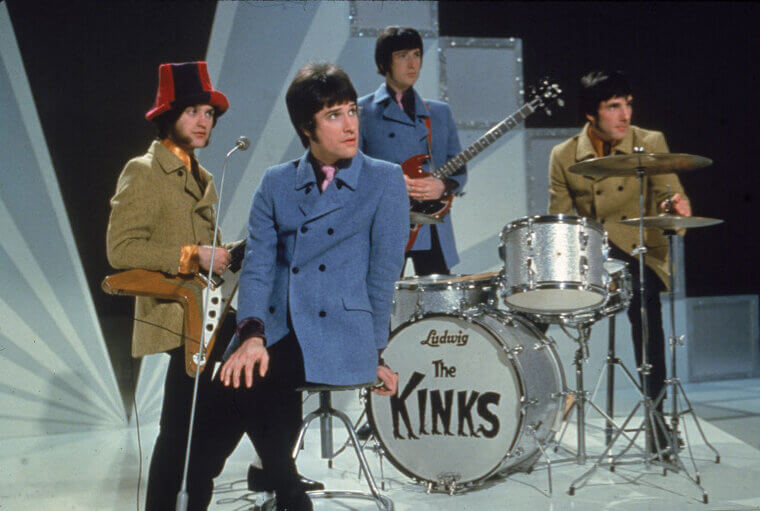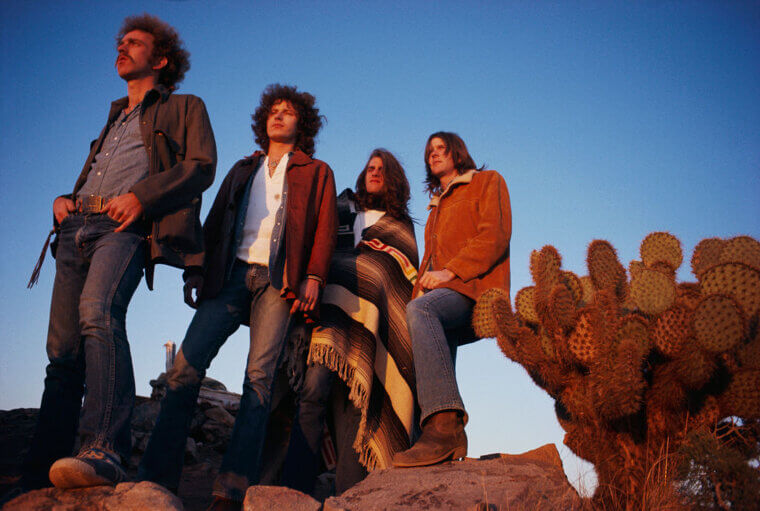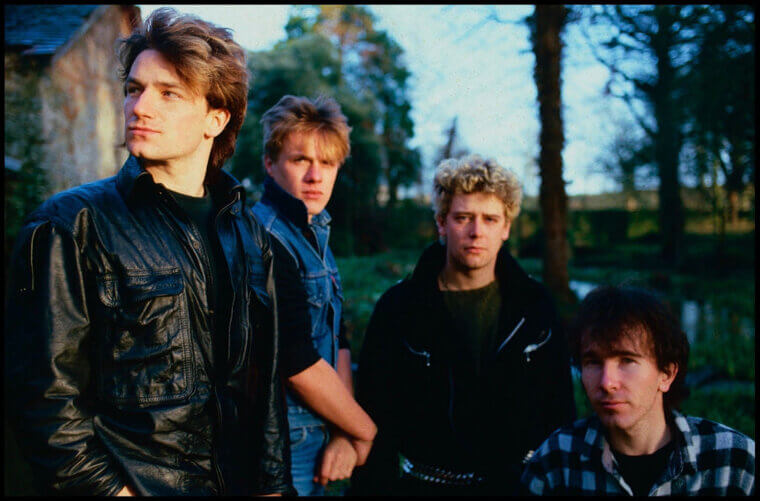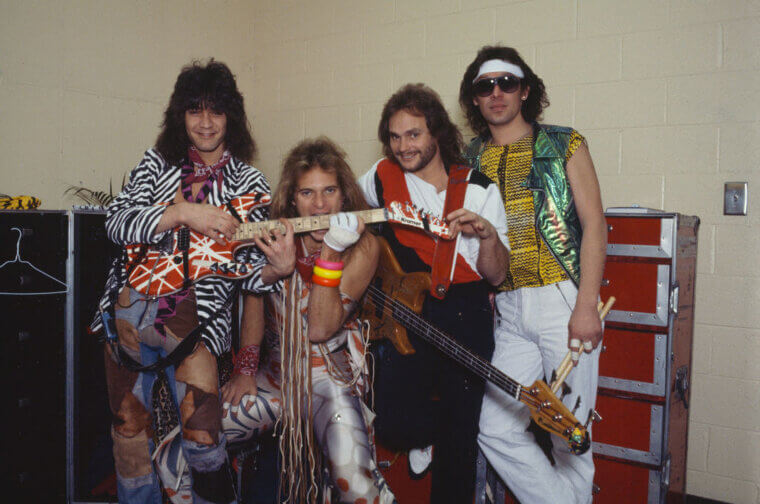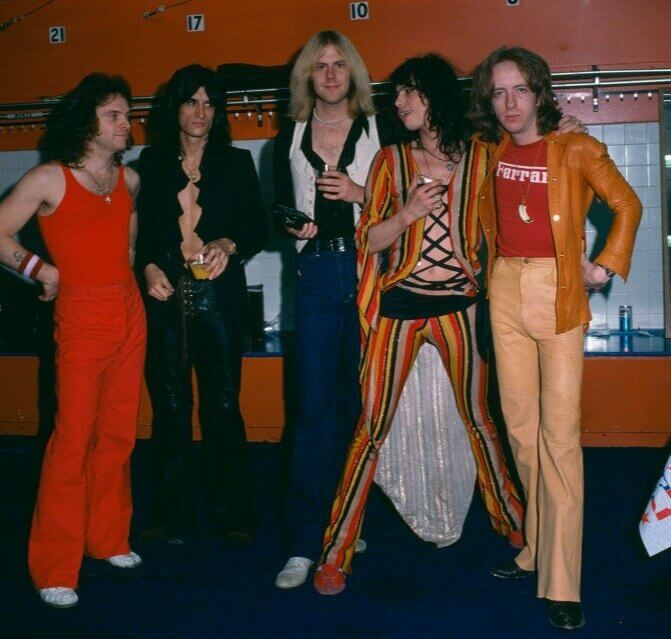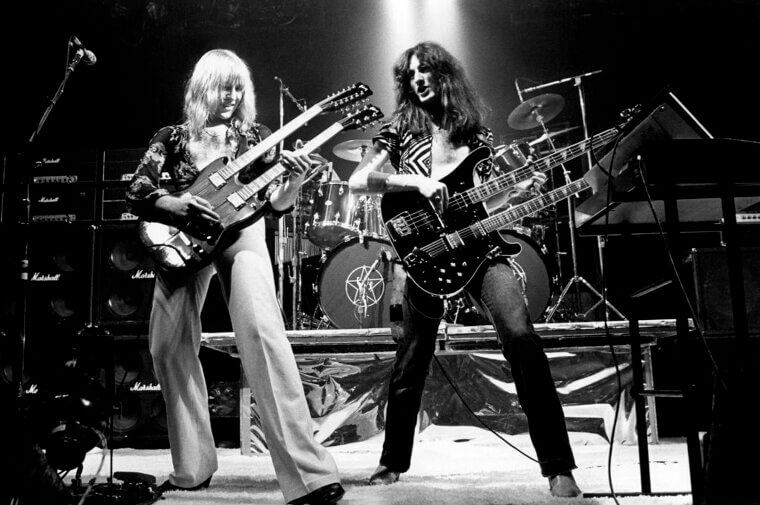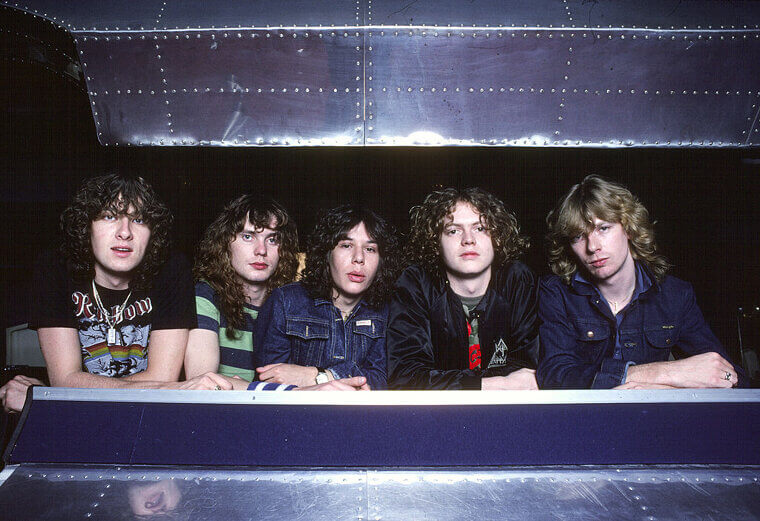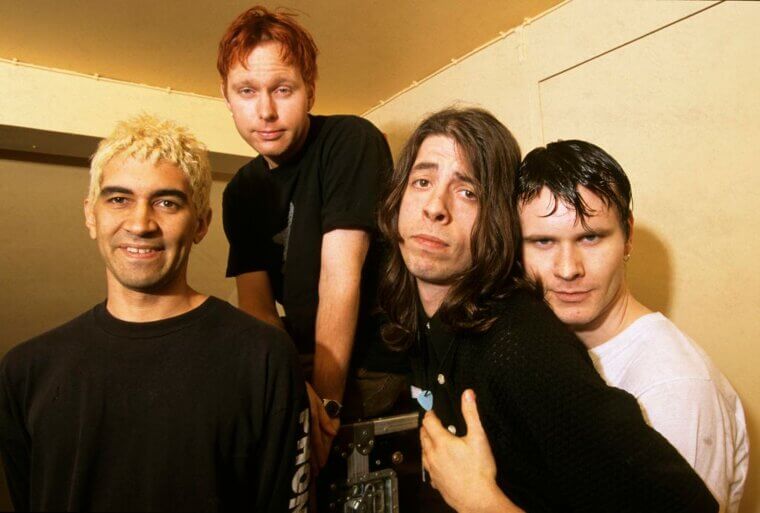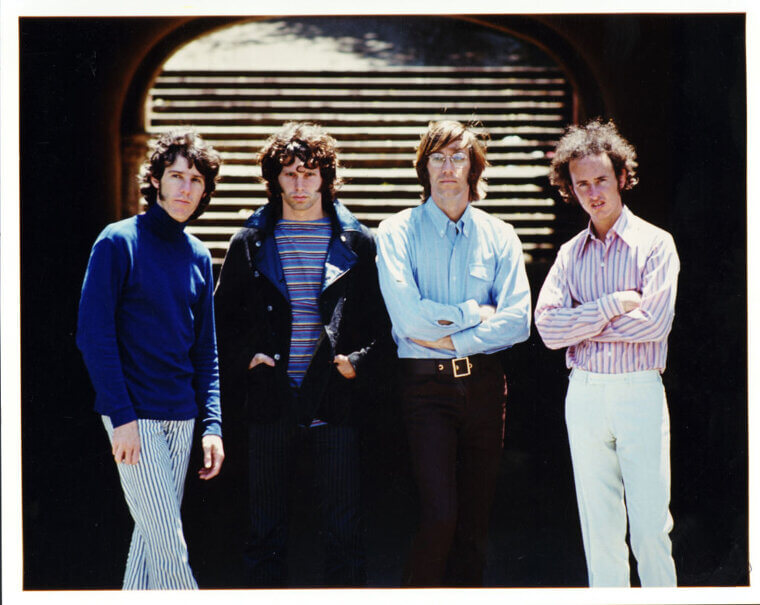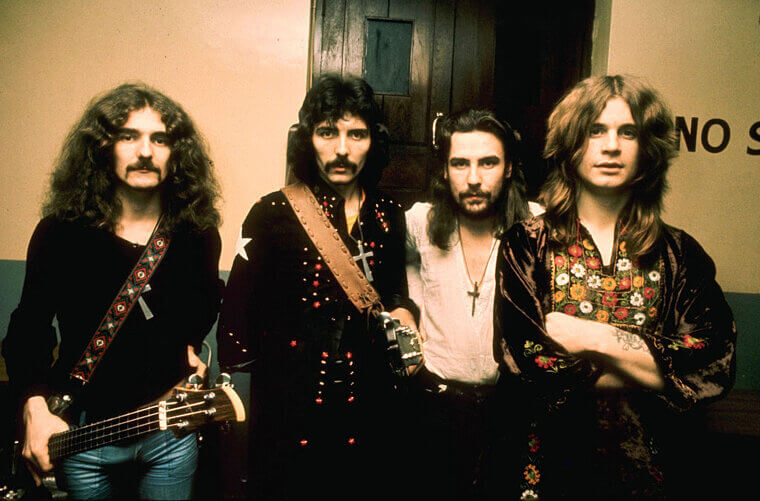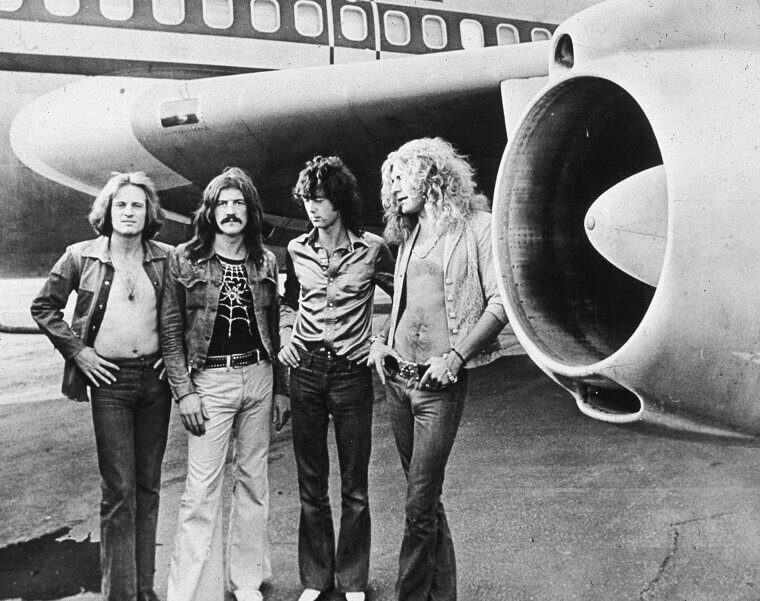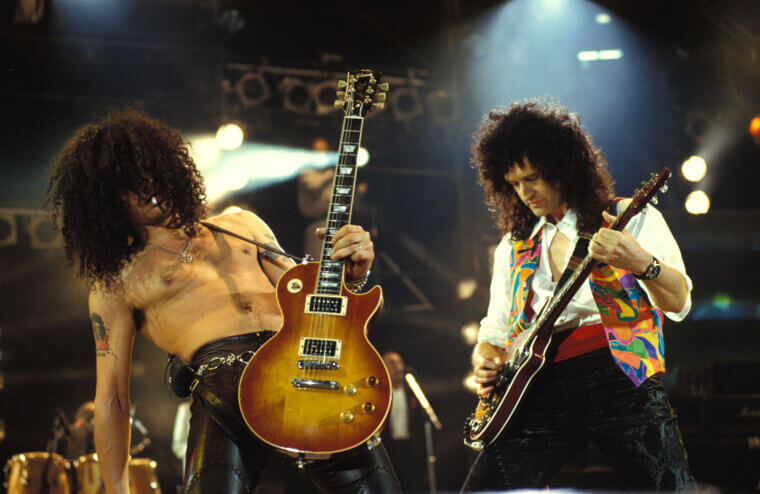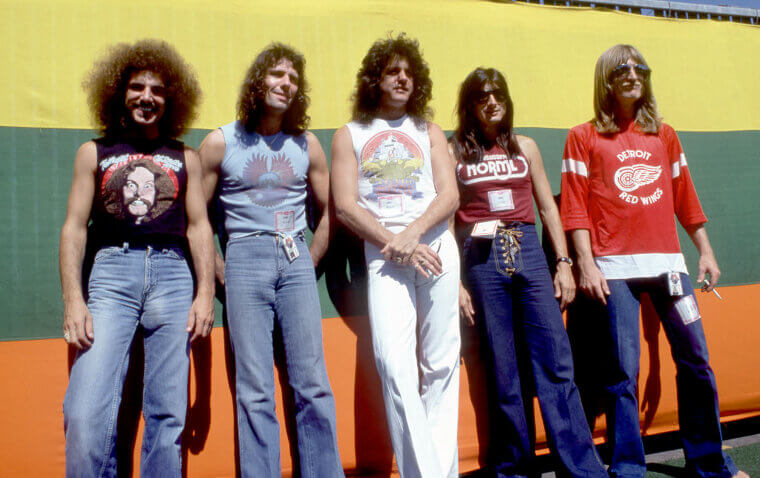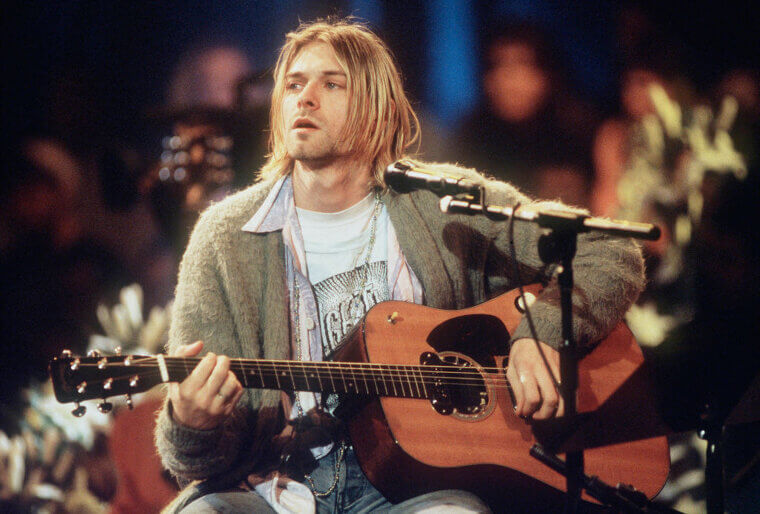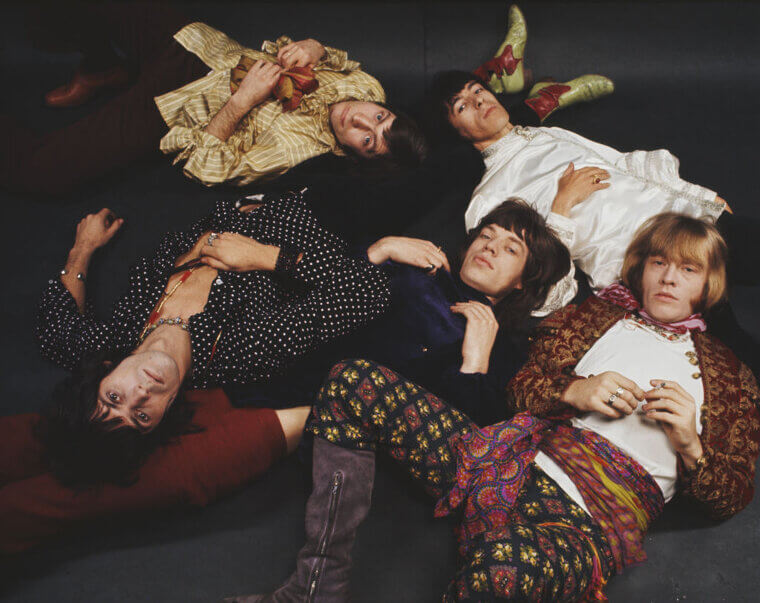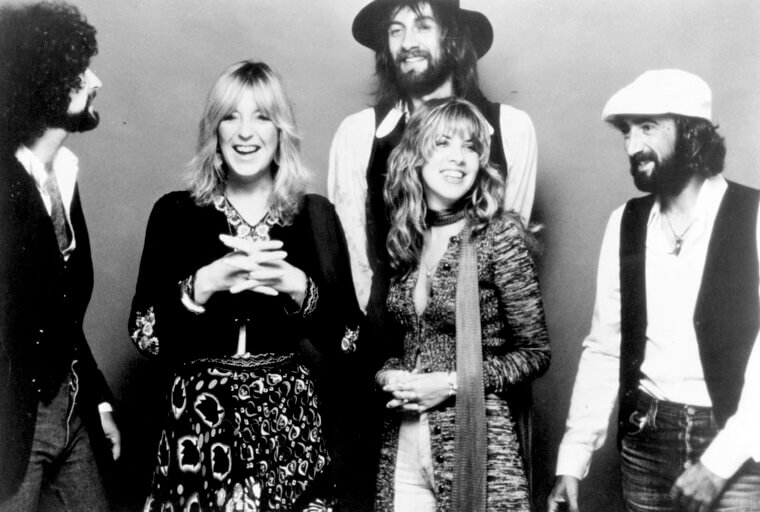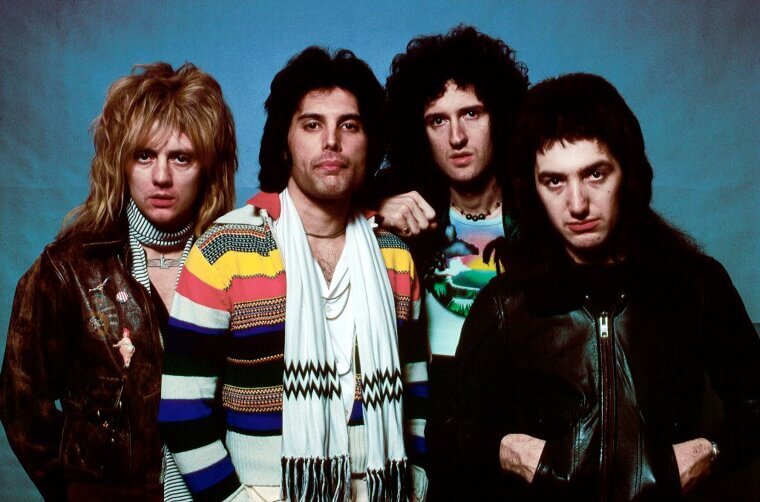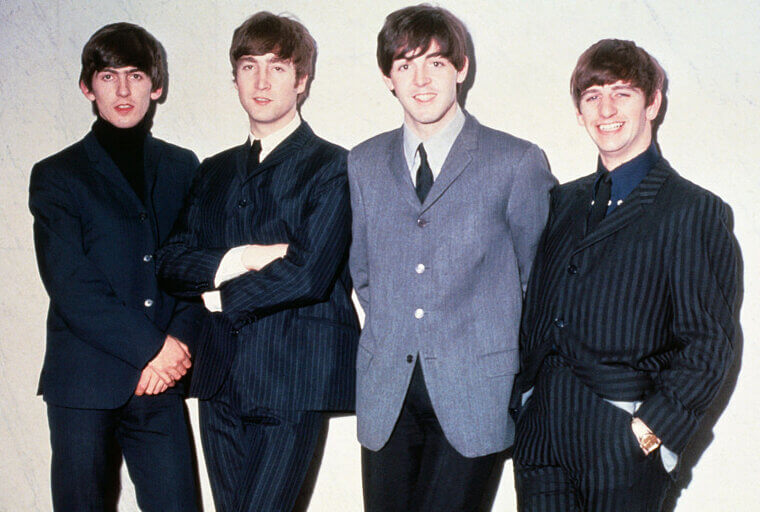Iron Maiden
They fused galloping bass lines, twin-guitar harmonies, and Bruce Dickinson’s operatic roar into a sound both epic and precise. With Steve Harris’s songwriting vision, Iron Maiden pushed metal toward narrative grandeur—concept suites, historical sagas, and cinematic hooks—while keeping everything ferociously melodic. Landmark albums like “The Number of the Beast,” “Powerslave,” and “Seventh Son of a Seventh Son” set the bar for musicianship and ambition.
Their mascot Eddie, artwork, and stagecraft made every tour an event, while a work ethic built a fanbase. Few bands match their consistency and influence across power, prog, and thrash metal.
Deep Purple
Deep Purple welded classical-tinged organ, molten guitar, and turbocharged rhythm into a template for hard rock and early heavy metal. The Mark II lineup—Ritchie Blackmore, Jon Lord, Ian Gillan, Roger Glover, and Ian Paice—set new standards for precision and firepower. “Highway Star” practically invents the speed-metal solo; “Smoke on the Water” supplied rock’s most famous riff. Onstage, “Made in Japan” captured improvisational fury with arena-shaking dynamics.
Across reinventions and comebacks like “Perfect Strangers,” they stayed inventive and loud. Their virtuosity, songwriting punch, and sheer power influenced generations of bands and still resonate worldwide.
Tom Petty and the Heartbreakers
Tom Petty and the Heartbreakers distilled American rock to its essentials: chiming Rickenbackers, unpretentious storytelling, and hooks that feel inevitable. With Mike Campbell’s lyrical guitar and Benmont Tench’s soulful keys, the band balanced clenched-jaw drive with jangly grace. Landmark records like “Damn the Torpedoes” and “Into the Great Wide Open” delivered radio staples—“American Girl,” “Refugee,” “The Waiting”—that never age.
Fiercely independent, they fought for fans against label price hikes, then filled arenas for decades. Petty’s plainspoken poetry and the band’s telepathic chemistry made timeless songs sound effortless—and define heartland rock’s beating pulse.
The Grateful Dead
They turned American music into a living conversation, blending folk, blues, bluegrass, country, and psychedelia with fearless improvisation. Jerry Garcia and Robert Hunter wrote durable songs—“Ripple,” “Friend of the Devil,” “Truckin’”—that invited reinterpretation night after night. Onstage, telepathic jams made each show unique, documented by a taping culture the band encouraged, nurturing a nationwide community. Innovations like the Wall of Sound and marathon tours forged a self-sustaining ecosystem long before streaming.
From Europe ’72 to Cornell ’77, the Dead proved longevity through curiosity, reshaping how bands tour, record, and relate to fans.
Lynyrd Skynyrd
They forged Southern rock’s definitive roar—triple-guitar firepower, muscle-tight rhythms, and Ronnie Van Zant’s plainspoken bite. “Sweet Home Alabama,” “Gimme Back My Bullets,” and the multi-section epic “Free Bird” became barroom hymns and catharsis. Beneath the swagger were sharp arrangements, blues feel, and country storytelling that honored roots while hitting like hard rock. Their road-warrior chops made them a lethal live band, captured on One More from the Road.
Despite tragedy, they revived and endured, influencing generations from country to metal with riffs and uncompromising attitude. The 1973–77 lineup remains a benchmark for guitar interplay.
Pink Floyd
They transformed rock into widescreen cinema—melding experimental sound design, spacious guitar lyricism, and philosophical narratives. With the classic core of David Gilmour, Roger Waters, Richard Wright, and Nick Mason, they perfected the concept album as immersive journey. “The Dark Side of the Moon,” “Wish You Were Here,” “Animals,” and “The Wall” reinvented studio craft with tape loops, synthesizers, and seamless suites.
Onstage, quadraphonic sound and monumental visuals redefined arena spectacle. Their melodies haunt, their atmospheres linger, and their ideas invite decades of re-listening—progressive yet emotional, ambitious yet deeply humane and resonant.
AC/DC
AC/DC proved restraint can be thunderous: riff-first songs, primal grooves, and choruses built to detonate stadiums. Angus Young’s knife-edged tone and duck-walking bravado met Malcolm Young’s granite rhythm, a machine that never wavered. With Bon Scott’s sly snarl and Brian Johnson’s sandpaper scream, they carried the same no-frills gospel across eras. “High Voltage,” “Highway to Hell,” and “Back in Black” stacked immortal anthems—economical, catchy, indestructible.
Live, they turned repetition into ritual, swing into stomp. Few bands have a clearer identity—or a longer run of fist-pumping, joyously unpretentious rock that still ignites crowds worldwide.
Red Hot Chili Peppers
They turned funk-punk mischief into stadium-dominating rock, fusing Flea’s elastic bass, John Frusciante’s melodic filigree, Chad Smith’s heavyweight swing, and Anthony Kiedis’s percussive cadences. With Rick Rubin-era breakthroughs—“Blood Sugar Sex Magik,” “Californication,” “By the Way,” and “Stadium Arcadium”—they balanced red-hot grooves with aching vulnerability. “Under the Bridge” and “Give It Away” became generational touchstones, while deep cuts stretched with improvisational spark.
Decades of reinvention, lineup resilience, and a distinctly Los Angeles spirit kept them innovative and omnipresent. Few bands better translate feel into songs that move bodies first and hearts soon after.
The Velvet Underground
They made art-rock dangerous and intimate, marrying Lou Reed’s deadpan storytelling with John Cale’s drones, minimal drums, and serrated feedback. Under Andy Warhol’s wing—and briefly with Nico—they treated taboo subjects with candor, turning New York’s grit into poetry. The banana album, “White Light/White Heat,” and “Loaded” mapped blueprints for punk, noise, indie, shoegaze, and experimental pop. Velvet’s influence dwarfed early sales: every cult listener started a band.
Their refusal of polish, insistence on truth, and melodic nerve made transgression sing—and permanently widened rock’s emotional and sonic palette. They remain the ur-text for outsiders.
The Replacements
They turned punk’s ragged energy into cathartic, melodic confessionals, with Paul Westerberg’s tuneful rasp giving misfits anthems to grow up by. From Minneapolis bars to college radio, they bridged hardcore bite and classic pop craft, influencing alt-rock’s entire 1990s wave. “Let It Be,” “Tim,” and “Pleased to Meet Me” balanced reckless humor with startling tenderness—“Bastards of Young,” “Unsatisfied,” “Can’t Hardly Wait.”
Infamously shambolic live, they could implode or transcend in the same set, yet the songs endured. The Replacements proved sincerity could snarl, making vulnerability loud and unforgettable—and countless bands followed their blueprint.
Santana
Combining searing blues-rock with Afro-Latin rhythms, Santana made the electric guitar dance, sing, and chant. Carlos Santana's lyrical sustain, percussive conversations, and modal excursions opened psychedelic rock to salsa, jazz, and spiritual uplift. Their Woodstock breakthrough and the self-titled debut, Abraxas, and Santana III delivered standards like Black Magic Woman, Oye Como Va, and Samba Pa Ti. Decades later, Supernatural proved their relevance with cross-genre hits and Grammys.
Beyond charts, Santana's global groove redefined fusion for radio and arenas, inspiring guitarists and percussionists to chase feel, melody, and transcendence for generations to come.
The Yardbirds
They turned British blues into a launchpad for invention, incubating three era-defining guitarists—Eric Clapton, Jeff Beck, and Jimmy Page—and weaponizing feedback, fuzz, and raga motifs years before psychedelia took hold. Their rave-up live surges pushed songs to ecstatic extremes, while hits like “For Your Love,” “Heart Full of Soul,” and “Shapes of Things” smuggled adventurous harmony and tone onto pop radio.
In the studio and onstage they made technique feel dangerous, influencing garage rock, hard rock, and psych. When they splintered, Page’s New Yardbirds became Led Zeppelin—proof of their catalytic legacy.
The Smashing Pumpkins
They fused metal heft, dream-pop shimmer, and baroque ambition into an alt-rock language both massive and intimate. Billy Corgan’s sculpted guitar orchestrations—stacked layers, unusual tunings, violin-bow sustain—met Jimmy Chamberlin’s jazz-honed thunder to create elastic dynamics from whisper to detonation. “Gish” cracked the door; “Siamese Dream” perfected the blend; “Mellon Collie” sprawled gorgeously with “1979,” “Tonight, Tonight,” and “Bullet with Butterfly Wings.”
They embraced art-film visuals, electronics, and acoustic fragility without losing bite. Endlessly imitated, rarely matched, the Pumpkins proved 1990s alternative could be operatic, vulnerable, and stadium-sized at once, for generations.
The Who
They turned volatility into precision: Pete Townshend’s windmill power chords, John Entwistle’s lead-bass thunder, Keith Moon’s orchestral drums, and Roger Daltrey’s leonine roar. They pioneered the rock opera with Tommy and deepened it on Quadrophenia, marrying youth-culture storytelling to explosive arrangements. Live at Leeds remains a benchmark for raw, disciplined chaos. In the studio they weaponized feedback and early synthesizers, birthing anthems like “Baba O’Riley” and “Won’t Get Fooled Again.”
From Mod style to arena-scale spectacle, The Who defined rock’s brawn, brains, and rebellion—and influenced every loud, ambitious band after, worldwide, for decades.
Heart
Heart proved arena rock could be both muscular and poetic, led by Ann Wilson’s volcanic voice and Nancy Wilson’s knife-bright guitar. Fusing Zeppelin-sized riffage with folk intricacy, they delivered “Crazy on You,” “Magic Man,” and “Barracuda,” then reinvented themselves in the ’80s with titanic singles like “These Dreams” and “Alone.” Their songwriting range—acoustic delicacy to feral hard rock—paired with virtuosic live chops kept them vital across decades.
As women fronting a heavy band, they kicked down doors, inspiring generations. Enduring, fearless, and melodic, Heart made power and vulnerability feel inseparable.
Jimi Hendrix
He reinvented the electric guitar as an instrument of color, space, and controlled chaos. With the Experience, he fused blues, psychedelia, and funk into rocket-fueled songs—“Purple Haze,” “Little Wing,” “Voodoo Child.” Studio alchemy on Are You Experienced, Axis, and Electric Ladyland introduced feedback sculpture, wah drama, octave fuzz, and backward tape as expressive vocabulary. Live at Monterey and Woodstock, he turned improvisation into theater and revelation.
His rhythm-chord poetry, melodic bends, and fearless tone shaped rock, metal, R&B, and hip-hop. Band of Gypsys proved continual evolution. Everyone since plays in his long shadow.
Weezer
Weezer fused crushing, clean-lined power chords with power-pop economy, turning geeky confession into arena shout-alongs. Rivers Cuomo’s precision songwriting delivered bulletproof choruses and melodic guitar leads that made “Buddy Holly,” “Say It Ain’t So,” and “Undone” instant standards. The Blue Album set the template; Pinkerton’s raw intimacy became a blueprint for emo and indie honesty; later renaissances—from the Green Album to Everything Will Be Alright in the End—proved their hooks inexhaustible.
Across decades and shifting trends, Weezer kept rock concise, catchy, and strangely heartfelt, influencing countless bands to embrace vulnerability behind big riffs.
Elton John
Elton John turned piano into a stadium battering ram, marrying glam flair with ironclad songcraft. With lyricist Bernie Taupin and a lethal band—Davey Johnstone, Dee Murray, Nigel Olsson—he delivered a run of classics few can match: Goodbye Yellow Brick Road, Honky Château, Madman Across the Water, Captain Fantastic. “Your Song,” “Tiny Dancer,” “Rocket Man,” and “Bennie and the Jets” became evergreen anthems.
Onstage, from Dodger Stadium ’75 to his farewell tour, he fused virtuosity with showmanship. Decades of reinvention proved melodic instinct and emotional directness never go out of style.
Pearl Jam
Pearl Jam fused arena-scale power with punk ethics, refusing trends while writing durable anthems. Eddie Vedder’s baritone carried “Alive,” “Jeremy,” “Even Flow,” and “Better Man,” while Mike McCready’s lyrical fire and Stone Gossard’s granite riffs anchored a dynamic, human band. Ten, Vs., and Vitalogy defined a generation and still crackle live. They challenged Ticketmaster, released official bootlegs, and built a community through evolving setlists and marathon shows.
Decades on, their songwriting deepened without losing urgency, proving longevity can equal integrity—and that principled independence can still fill stadiums worldwide. Seattle roots, global reach.
Kiss
Kiss turned rock into comic-book spectacle, pairing crunching, radio-ready riffs with fire-breathing theater and instantly recognizable personas. Gene Simmons and Paul Stanley built anthems—“Rock and Roll All Nite,” “Detroit Rock City,” “Love Gun,” “I Was Made for Lovin’ You”—that still detonate arenas. Their pyro, platforms, and face paint redefined the possibilities of a live show while the Kiss Army proved fandom could be mobilized.
Beyond showmanship, they pioneered band-as-brand merchandising and survived lineup changes to thrive across decades. Few acts have influenced stage production, marketing, and pop culture as comprehensively—or as loudly.
Dio
Ronnie James Dio made heavy metal mythic and muscular, marrying operatic range with street-tough conviction. With Rainbow and on Black Sabbath’s Heaven and Hell, he rebooted riff music with melody, drama, and discipline. His own band crystallized the sound: Holy Diver, The Last in Line, and “Rainbow in the Dark” fused precision, hooks, and heroic atmosphere. Vivian Campbell’s serrated guitars met Dio’s lyrical quests, codifying power metal’s vocabulary.
Onstage, he popularized the devil-horns salute and sang every note like an oath. Generations learned that heaviness can be noble, melodic, and eternally resilient.
Metallica
Metallica turned underground speed and precision into a global lingua franca, pioneering thrash with downpicked riffs, whiplash tempos, and compositional ambition. “Kill ’Em All,” “Ride the Lightning,” and “Master of Puppets” expanded metal’s vocabulary; “...And Justice for All” pushed complexity; the self-titled “Black Album” proved heaviness could conquer radio and stadiums. Relentless touring forged one of rock’s fiercest live reputations, while experiments from S&M to 72 Seasons showed restless evolution.
Generations learned songwriting discipline, tone, and endurance from them. Few bands reshaped both the mainstream and the metal underground so completely.
The Kinks
Ray and Dave Davies fused serrated power-chords with kitchen-sink storytelling, giving rock both bite and wit. “You Really Got Me” and “All Day and All of the Night” sketched the blueprint for hard rock and punk; later, The Kinks Are the Village Green Preservation Society, Arthur, and Lola expanded into wry social novels set to irresistible hooks. Their small-screen epics, chiming riffs, and bittersweet melodies shaped Britpop, garage rock, and indie generations.
Few bands balanced satire, tenderness, and sheer riff impact so deftly—or made English everyday life feel mythic and universal.
The Eagles
They distilled country-rock into gleaming architecture: sun-baked harmonies, immaculate songcraft, and grooves built to last. Don Henley and Glenn Frey’s storytelling anchored “Desperado,” “Take It Easy,” and “One of These Nights,” while Joe Walsh’s guitar bite sharpened their edge. “Hotel California” fused noir narrative with towering arrangement, becoming shorthand for ambition and disillusion. Onstage they were surgical yet soulful, their voices blending like one instrument.
Record-setting sales, meticulous production, and a catalog of airwave staples proved that craftsmanship and risk endure. The Eagles turned West Coast atmosphere into timeless myth—and defined radio rock.
U2
U2 married stadium-scale fervor to restless reinvention, fusing The Edge’s chiming, delay-sculpted guitar with Bono’s open-throated urgency and a rhythm section built for lift-off. They turned idealism into anthems—“Sunday Bloody Sunday,” “Pride,” “Where the Streets Have No Name,” “One”—while continuously rebooting their sound on The Joshua Tree, Achtung Baby, and beyond. Live, from Red Rocks to the 360° tour to the Sphere, they redefined spectacle without losing intimacy.
Decades of activism, consistency, and melodic courage made them a global conscience that still writes choruses people believe in. Enduring relevance across eras.
Van Halen
Van Halen detonated late-’70s rock with Eddie Van Halen’s revolutionary guitar language—two-handed tapping, elastic whammy dives, and the muscular “brown sound.” Alex’s swinging thunder, Michael Anthony’s gluey bass and sky-high harmonies, and David Lee Roth’s acrobatic swagger forged a party-starting machine. Their 1978 debut and 1984 reshaped radio; “Eruption,” “Ain’t Talkin’ ’Bout Love,” and “Jump” became rite-of-passage riffs.
With Sammy Hagar, 5150 proved reinvention could still dominate arenas. They made virtuosity feel fun, songcraft feel effortless, and hard rock feel brand new—changing every guitarist’s ambitions overnight.
Aerosmith
Aerosmith fused blues grit with arena-size hooks, propelled by Steven Tyler’s elastic wail and Joe Perry’s serrated riffs. Toys in the Attic and Rocks delivered “Dream On,” “Sweet Emotion,” and “Walk This Way,” establishing a swaggering, groove-forward template. Their 1986 Run-D.M.C. reboot bridged rock and hip-hop, jump-starting a second imperial run through Permanent Vacation and Pump. Onstage, they remained dangerous and tight, turning sleaze into swing and choruses built for liftoff.
Decades of reinvention, indelible riffs, and unkillable chemistry made them America’s definitive hard-rock lifers—and a blueprint for durable crossover endurance worldwide.
Rush
Rush fused virtuoso chops with restless curiosity, turning odd meters and synth textures into arena-sized hooks. Geddy Lee’s melodic bass, keening vocal, and live keyboard juggling met Alex Lifeson’s prismatic guitars and Neil Peart’s architectural drumming and literate lyrics. 2112, Hemispheres, and Moving Pictures proved concept ambition could groove—“Tom Sawyer,” “Limelight,” and “The Spirit of Radio” became classics without compromise.
Onstage they sounded bigger than trios should, evolving for decades while remaining fiercely self-directed. Their precision, imagination, and integrity rewired progressive rock and influenced generations of musicians across metal, indie, and pop.
Def Leppard
Def Leppard turned Sheffield grit into aerodynamic anthems, marrying stacked vocal hooks with laser-cut riffs and precision rhythms. With producer Mutt Lange, they engineered radio-ready thunder on Pyromania and the meticulous Hysteria, where every chorus hits like a sunrise. “Photograph,” “Pour Some Sugar on Me,” and “Love Bites” defined MTV-era scale without sacrificing musical craft. Their resilience—continuing after drummer Rick Allen lost his arm—became legend, while global diamond sales proved their reach.
Sleek yet heavy, meticulous yet euphoric, Def Leppard perfected arena rock’s DNA and influenced generations of pop-metal and modern rock.
Foo Fighters
Born from loss and reinvention, Foo Fighters turned Dave Grohl’s one-man demo into rock’s most dependable stadium engine. They balanced muscle and melody—zinging riffs, shout-along choruses, and harmonies that stick—while honoring punk roots with tireless touring and community spirit. The Colour and the Shape, Wasting Light, and Concrete and Gold stacked enduring hits: “Everlong,” “My Hero,” “Best of You,” “The Pretender.”
Their live shows feel communal and cathartic, anchored by relentless work ethic and humor. Through tragedy and renewal, they kept rock generous, loud, and emotionally direct—proof that craft and heart still carry the day.
The Doors
They fused electric blues, modal psychedelia, and cabaret drama into a sound both sensual and menacing. Jim Morrison’s baritone and Dionysian poetry met Ray Manzarek’s hypnotic organ, Robbie Krieger’s flamenco-tinged lines, and John Densmore’s jazz pulse. From “The End” and “Light My Fire” to “Riders on the Storm,” they stretched pop forms into trance and theater, courting danger without losing melody.
Their debut redefined the possibilities of a rock album; their concerts felt like rituals. The Doors made darkness luminous and mystique musical, influencing gothic, alternative, and art-rock for decades.
Black Sabbath
Black Sabbath distilled blues into something darker and heavier, inventing heavy metal’s vocabulary with down-tuned riffs, tritone menace, and apocalyptic groove. Tony Iommi’s granite guitar, Geezer Butler’s ominous bass, Bill Ward’s swinging thunder, and Ozzy Osbourne’s haunted tenor forged a sound both primal and hypnotic. Albums like Paranoid, Master of Reality, and Vol. 4 delivered canonical riffs—“War Pigs,” “Iron Man,” “Paranoid”—and themes confronting war, addiction, and dread.
Their reinvention with Ronnie James Dio proved resilience and range. Every subsequent metal subgenre traces back to their weight, atmosphere, and uncompromising intent and intensity.
Led Zeppelin
Led Zeppelin fused delta blues, folk mysticism, and thunderous invention into rock’s most imposing architecture. Jimmy Page’s orchestral riffcraft, Robert Plant’s keening wail, John Paul Jones’s arranging genius, and John Bonham’s tectonic groove made heaviness swing. The first four albums moved from “Whole Lotta Love” to “Stairway to Heaven,” then Houses of the Holy and Physical Graffiti expanded scope with funk, prog, and acoustic splendor.
As a live unit, they stretched songs into rituals of dynamics and danger. Their sound, imagery, and independence rewired hard rock, metal, and alternative for generations.
Guns N’ Roses
Exploding out of late-’80s Sunset Strip excess, Guns N’ Roses welded punk danger to classic-rock swagger and bluesy precision. Appetite for Destruction remains a once-in-a-generation debut—ferocious, hook-packed, and emotionally raw—spawning “Welcome to the Jungle,” “Sweet Child o’ Mine,” and “Paradise City.” Slash’s lyrical, snake-charmer leads met Duff and Izzy’s lean engine and Axl Rose’s elastic, volcanic voice. The Use Your Illusion era proved operatic ambition without losing bite.
Onstage, volatility became electricity. Their influence recalibrated mainstream hard rock’s attitude, look, and sound—and their anthems still detonate across arenas and generations.
Journey
Journey made arena rock sing with precision and heart: Neal Schon’s lyrical sustain, Steve Perry’s golden tenor, and Jonathan Cain’s songcraft. Infinity jump-started the transformation; Escape and Frontiers perfected it, stacking indestructible choruses and soaring harmonies. “Don’t Stop Believin’,” “Any Way You Want It,” “Separate Ways,” and “Faithfully” became cultural fixtures, equal parts muscle and melodrama. Beneath the gloss were tight rhythms, tasteful solos, and melodies engineered for catharsis.
Decades of reinvention and touring proved their durability, while pop, rock, and sports stadiums still echo with their optimism and immaculate craft.
Nirvana
Nirvana detonated the early-’90s mainstream, fusing punk concision, pop melody, and quiet-loud shock therapy into cathartic confession. Kurt Cobain’s grainy howl and indelible hooks met Krist Novoselic’s anchoring low end and Dave Grohl’s sledgehammer dynamics, turning basement intensity into global anthems. Nevermind toppled hair-metal excess; In Utero doubled down on abrasion and honesty; MTV Unplugged revealed fragile, timeless songcraft.
They made alienation singable, dignity for misfits market-sized, and authenticity commercially undeniable. In a brief, blinding run, Nirvana rewired rock’s compass and cleared space for alternative voices worldwide. Their aftershocks still shape modern guitar music.
The Rolling Stones
They turned American blues into a swaggering global language—sleazy, soulful, and impossibly durable. Keith Richards’s open-G riffcraft and Charlie Watts’s unflappable swing anchored Mick Jagger’s elastic sneer, turning grooves into myths. From Beggars Banquet and Let It Bleed through Sticky Fingers and Exile on Main St., they issued a four-album run many call rock’s pinnacle, then kept stadiums roaring for decades.
“Gimme Shelter,” “Brown Sugar,” “Jumpin’ Jack Flash,” and “Start Me Up” became cultural shorthand. Surviving eras and reinventions, the Stones proved rock could age without softening—attitude, feel, and songs forever.
Fleetwood Mac
Fleetwood Mac turned personal turmoil into immaculate pop architecture, blending California warmth with British blues DNA. The Buckingham–Nicks era sharpened the attack: Lindsey’s percussive guitar and studio wizardry, Stevie Nicks’s mystical rasp, and Christine McVie’s clear-eyed melody forming a three-writer engine. Rumours became a cultural monolith—hook-dense, emotionally surgical, endlessly replayable—while Tusk proved experimentation at stadium scale.
Earlier, Peter Green’s haunting songs set a high bar for feel and tone. Onstage, stacked harmonies and meticulous dynamics made drama sound effortless. Their craftsmanship, reinvention, and durability shaped generations of song-centered rock.
Queen
Queen fused hard-rock heft, operatic pomp, and pop elegance into songs engineered for triumph. Freddie Mercury’s virtuosic voice and theatrical command met Brian May’s orchestral guitar, Roger Taylor’s explosive snap, and John Deacon’s melodic bass. A Night at the Opera turned ambition into delight; “Bohemian Rhapsody,” “We Will Rock You,” and “We Are the Champions” became communal rituals. Studio craft, multi-tracked harmonies, and stylistic risk fueled reinvention—from glam and prog to disco and synth-rock.
Live Aid proved unstoppable charisma and precision. Few bands combined spectacle, musicianship, and indelible hooks so completely—or influenced more genres.
The Beatles
They compressed a decade of innovation into seven years, redefining what a rock band could write, record, and be. From harmonized Merseybeat to studio psychedelia, they turned curiosity into craft: Rubber Soul’s maturity, Revolver’s sonic leap, Sgt. Pepper’s world-building, the White Album’s sprawl, Abbey Road’s cathedral of melody. Lennon–McCartney’s song factory and Harrison’s rising brilliance yielded standards across pop, rock, folk, and soul. In the studio, tape loops, varispeed, and orchestration served songs, not gimmicks.
Their melodies endure, their experiments normalized, their cultural impact unmatched—modern pop’s genetic code. For artists across every genre.

